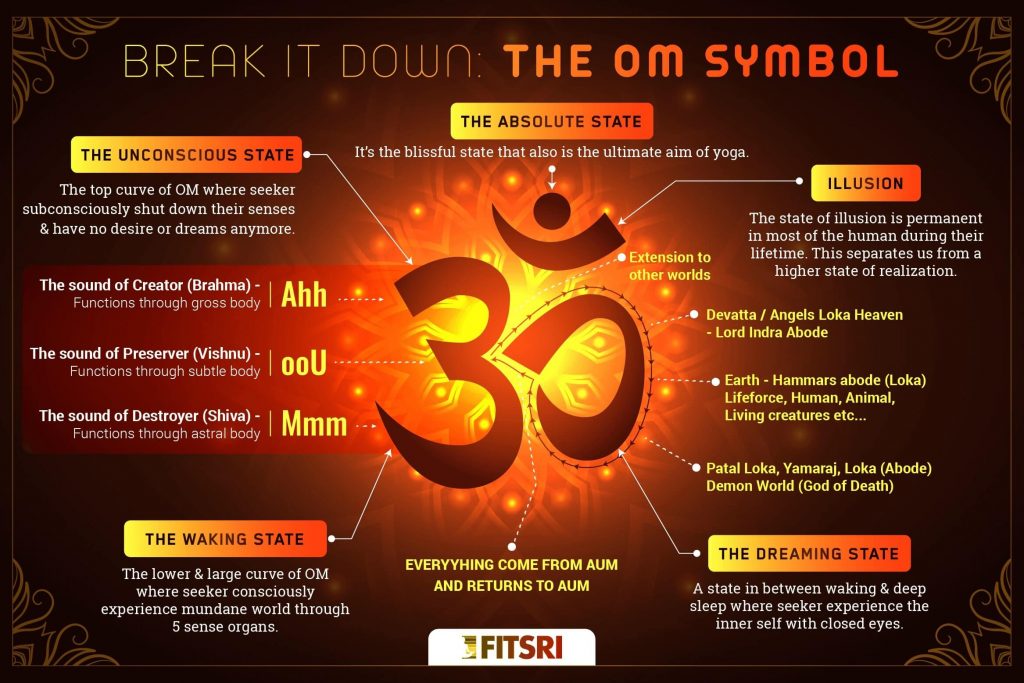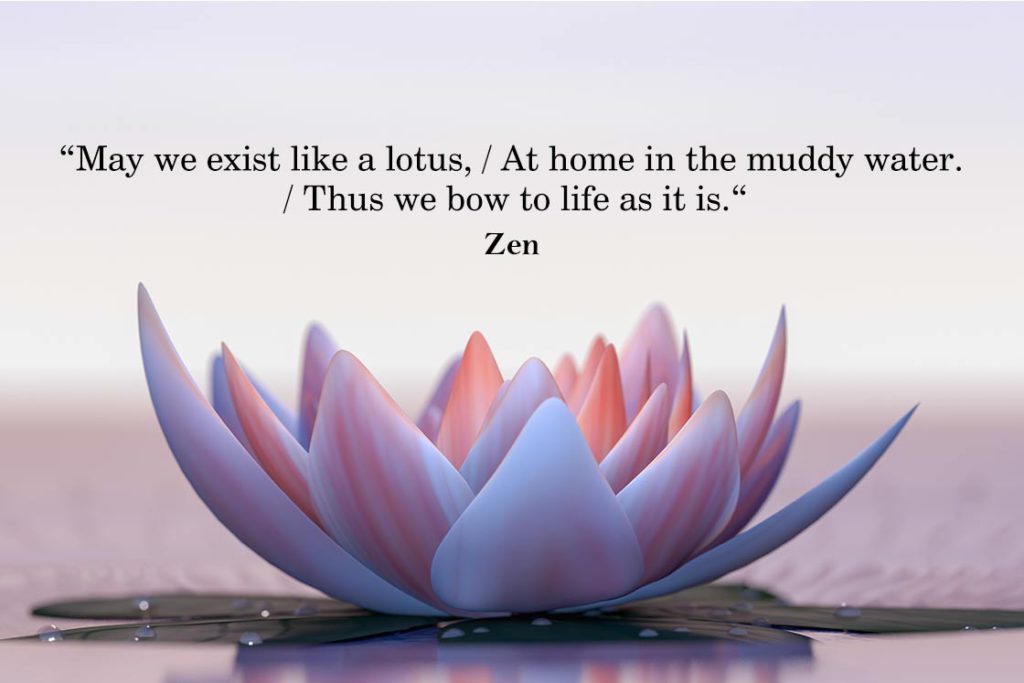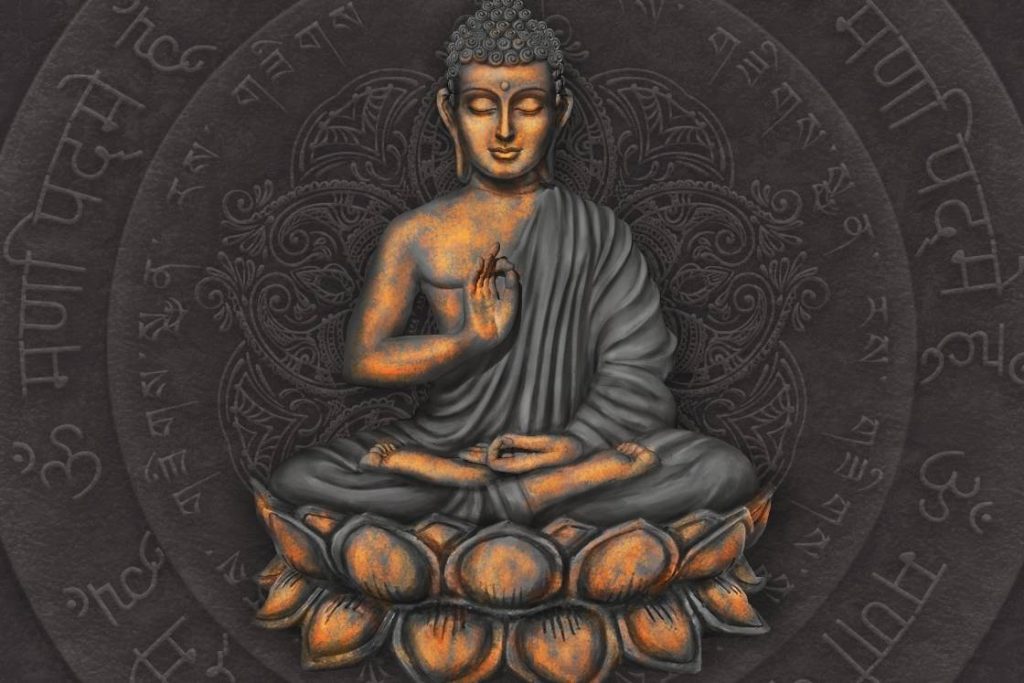Symbols have been used since generation as a form of communication and representation of emotions, ideas, feelings, concepts, and/or spiritual beliefs. The symbols can be spiritual, mystical, or cultural which have special meanings and purpose for the person using them.
The heart symbol, stop sign, non-smoking symbol, crying emoji, skull with bones crossed below it or the universal danger sign are all forms of communication that are effectively conveyed through symbols.
Similarly, in yoga, symbols are used to provide a point of focus, a sense of peace or add meaning to the yoga practice. Yoga symbols have been derived from Hinduism and Buddhism and are considered sacred with profound meaning. They are often used in amulets, jewellery, posters, shirts, etc which can be easily obtained.
Most of the yoga symbols are used in yoga classrooms in the form of posters, sculptures or wall hangings. Symbols such OM, Hamsa, Buddha, etc. are commonly visible across yoga studios and can help the yoga practitioners with their concentration, focus, and connect to the deeper truth.
In this article, we have detailed the 10 most common yoga symbols that you will see or can use for yoga practice.
1. OM

OM is one of the most universal symbols used in prayer, yoga, and meditation. It is a representation of creation and when chanted, is known to give a deep sense of bliss.
In the Hindu religion, OM is said to be the sound that was generated at the time of the creation of the universe. Hence, it is believed that sound will connect a person’s mind and spirit to the universe’s vibration.
The symbol you will generally see in the yoga classes or in many Hindu households is a Sanskrit symbol. The same benefits will be provided by focusing on the visual form of OM as with chanting. Each character of the Sanskrit symbol holds a special meaning.
- The dot on top represents the absolute state of consciousness. It is the state where you experience tranquility and are connected to the divine.
- The crescent just below the dot means illusion. It is symbolic of things that will distract you from attaining the absolute state of consciousness.
On the left of the crescent, there are 2 curves drawn in the shape of ‘3’, with the button curve being larger than the top.
- The top curve represents unconscious sleep or a state of deep sleep, where even the dreams stop subconsciously.
- The curve below it is the waking state, the most recognized state of all. It is our conscious mind and the state where we experience things through our 5 senses.
- To the right of the curves is another curve that represents the dream state.
OM is often chanted before, during and after the yoga asanas are performed. The visual representation is also put up as posters or wall hangings in yoga classrooms. And audio of the Om chant can also be played throughout the yoga sessions. Most mantras are chanted by saying Om first.
2. Lotus

The lotus flower has, perhaps, the most wonderful symbolic meaning.
Lotus flower grows in muddy or swampy lands, the water lily signifies the light emerging from the darkness. Or it can also mean a transformation of oneself after facing adversity. The meaning can be unlimited and subjective, however, there is no denying that this beautiful flower is an important symbol in religions like Hinduism and Buddhism.
In the Hindu religion, the lotus is carried by Goddess Lakshmi and Lord Brahma. It is also a symbol of beauty, fertility, prosperity, and spirituality. Whereas, in Buddhism, the lotus flower is symbolic of purity, spiritual awakening and faithfulness. Hence, if the lotus petals are closed it signifies a stage before enlightenment and when they are opened it represents having gained enlightenment.
Lotus has a lot of significance in yoga as some of its asanas and mudras have been named after it, such as the Padmasana and the lotus mudra. The lotus pose or padmasana is performed by sitting cross-legged, with each foot on top of the thigh. This asana is a great hip-opening pose and aids in releasing tension.
The lotus mudra can be made by joining the tips of the pinky finger and thumb of both the hands and spreading the other three fingers like a blooming petal. This mudra opens the heart and supports love and beauty to emerge from your inner self.
The 7 chakras are also represented by the lotus flower where the number of petals has a specific quality of the chakra. For example, root chakra has 4 petals and the crown chakra is represented by 1000 petals lotus. The color of the lotus is also unique to each chakra.
3. Buddha

Buddha is a symbol of enlightenment, compassion, patience, charity and non-judgement. Yoga and buddha, thus, have a lot of similarities in their way of approaching to reach the higher state of consciousness.
You will often see the figurines of Buddha in many states of being such as bliss, healing, touching the earth, and the most common of all, meditation. Both yoga and Buddhism teach us compassion, acknowledging suffering to overcome it, non-violence, not being angry and removing ignorance.
In many yoga and meditation classrooms, you will see statues or posters of Buddha in his various forms to make us aware of his teachings and encourage us to imbibe them in our daily lives as well.
Some of the mudras of Buddha such as Dhyan Mudra, Anjali Mudra, Abhaya Mudra, etc, have also been adopted by meditation practitioners for their profound benefits.
4. Hamsa

Hamsa or the evil eye symbol is another common symbol that has its relevance in multiple religions such as Buddhism, Hinduism, Judaism and Jainism. Though each religion has its own unique interpretation and purpose of using it, it all boils down to one meaning-warding of the evil eye to attract good luck, fortune, health, and fertility.
The Hamsa symbol is represented by a palm of hand with the index, middle and ring finger pointed upwards and the pinky and thumb lying on the side. It is usually used as a talisman and is made in blue and white.
In yoga, the hamsa is often associated with the 5 chakras, as each finger represents 5 elements our body is made up of, which are:
- Thumb – Element of Fire; Solar Plexus Chakra
- Index Finger – Element of Air; Heart Chakra
- Middle Finger – Element of Space; Throat Chakra
- Ring Finger – Element of Earth; Root Chakra
- Little Finger – Element of Water; Sacral Chakra
You can wear the Hamsa in the form of jewellery, hang it on the walls in the form of tapestry, wear clothes that depict the Hamsa symbol, etc. By placing it anywhere, you are essentially protecting yourself from the evil eye, jealousy, danger, unhappiness, or any bad luck.
5. Mandala

Mandalas are symmetrical circular designs that represent harmony, balance and wholeness. In many Hindu households, the mandalas are drawn to honour the Goddess Lakshmi during the festival of Diwali. The circular form of a mandala is indicative of the circle of life, where the different layers symbolized the layers of our existence.
The beautiful and alluring design of every mandala is unique and greatly helps in concentration during meditation. In recent years, mandala drawing and colouring has also been used as a way of calming the mind. While concentrating on a mandala, you can easily shut off your mind to the outside world and gain a sense of inner peace.
Typically, a mandala contains various patterns such as flowers, stars, circles, triangles, and squares, each of them having a specific meaning behind them. An upward triangle symbolizes universal aspiration whereas a downward triangle represents worldly aspirations. Squares are associated with stability and groundings and the stars represent spirituality and freedom.
Apart from the shape, the colors used in mandalas also have significance.
- Red – strength, power
- Pink – love, femininity, fertility
- Orange – creativity, transformation, self- awareness, intuition
- Yellow – learning, wisdom, laughter, happiness
- Green – physical healing, physical ability, love of nature
- Blue – emotional connection and healing, inner peace, meditation
- Purple – spiritual
- Black – mystery, deep thinking, individuality
You can hang a mandala in front of you during your yoga practice as a point of focus. Also, drawing a mandala will help in reducing the chaos and clutter in the mind. And open eye meditation by tracing the pattern of the mandala with your eyes will be beneficial in improving your concentration.
6. Chakra

Chakra in yoga is a symbol of the energy centre. In general, chakra means wheel.
There are 7 main chakras in our body that start from the base of the spine and end at the top of the head.
The mention of chakras can be found in ancient Hindu scriptures. Each of these chakras have specific qualities associated with them, along with the color and elements. The seven chakras are as follows:
| S.No. | Chakra Name | Sanskrit Name | Color | Element |
| 1 | Root Chakra | Muladhara | Red | Earth |
| 2 | Sacral Chakra | Svadhisthana | Orange | Water |
| 3 | Solar Plexus Chakra | Manipura | Yellow | Fire |
| 4 | Heart Chakra | Anahata | Green | Air |
| 5 | Throat Chakra | Vishuddha | Blue | Space |
| 6 | Third Eye Chakra | Ajna | Indigo or Royal Blue | Light |
| 7 | Crown Chakra | Sahasrara | Purple or White | Consciousness |
Each of these chakras has unique characteristics that provide us with mental, physical, emotional and spiritual well-being. Hence it is of utmost importance that these chakras are kept in balance, which can be easily achieved through a regular practice of yoga and meditation.
Visually, they are represented in the form of spinning circles in a straight line from the base of the spine to the top of the head. These spinning wheels have particular number of lotus petals.
Though not all yoga practitioners perform yoga keeping in mind the chakras, however, many poses can be associated with aligning, activating, balancing, and healing the chakras.
7. Number 108

The number 108 is said to have deep spiritual meaning in Hinduism and Buddhism. 1 represents the universe, 0 represents humility and 8 represents infinity. It is a number that signifies the wholeness and the basis of all creation.
Religiously speaking,
- There are 108 Upanishads (ancient holy scriptures in Hinduism)
- There are 108 beads in a mala
- 108 sun salutation practice
- In Hinduism, there are 108 names of God.
- 108 is the number of Tibetan holy books.
- Most Buddhist temples are built with 108 steps which are the steps to enlightenment.
- Buddhist temples ring the bell 108 times on New Year’s Eve to cleanse 108 worldly desires
Mathematically speaking,
- The distance between the Sun and Earth is 108 times the diameter of the Sun.
- The distance between the Earth and Moon is 108 times the diameter of the Moon.
- 108 is known as the Harshad number where the number is divisible by the sum of its numbers, that is, 1+0+8 = 9 and 108 is perfectly divisible by 9.
Apart from the above marvels, 108 also has significance in some ancient architectures, such as Stonehenge, Mayan High Temple of Lamanai, and Tikal Temple in Guatemala. In yoga, the sun salutation or Surya Namaskar is also performed 108 times by seasoned yogis and practitioners.
Thus, the number 108 has a special relation to the cosmos and its recurrence signifies completeness.
8. Ganesha

Lord Ganesh is one of the most important Gods of the Hindu religion. He is associated with bringing prosperity and good luck thus, he is also known as Lord of Good Fortune and Lord of Beginnings. Ganesh has the head of an elephant with one broken tusk and a round belly.
Each of Ganesh’s bodily features has a spiritual connotation:
- The elephant head symbolizes knowledge, which reminds us to think big and encourages deep thinking.
- His eyes are usually small which means that we should enjoy the small things and experiences in life.
- His small mouth is also a reminder to talk less. In meditation and yoga, it can translate to embrace silence.
- The big ears encourage us to listen carefully and patiently.
- The trunk represents versatility and adaptability. In your life, you should be adaptable to change and be versatile in life.
- The lone tusk on Ganesh reminds us that there are good and bad moments in life. We should let go of the bad emotions and memories and embrace the good experiences.
Ganesha symbol can be used in the form of pendants, statues, posters, or drawings to remember the meaning and teachings of Ganesh in all aspects of life. You can practice Ganesha mudra in yoga to inculcate the qualities of Lord Ganesha. By removing obstacles, he provides us with hope and prosperity for the future.
9. Mudra

Mudra is hand gestures that form a part of hastha yoga (hand yoga). When you perform a mudra, you are allowing the energy to flow within you in a certain way. They assist in deepening your meditation and calming the mind. All the mudras have a special significance, purpose, and intentions.
One of the most popular mudra that is used during meditation is the Gyan Mudra, which is done by joining the tips of the index finger and thumb together and keeping the rest of the fingers straight. Also known as the universal ‘ok’ symbol, it helps in improving our concentration and mental clarity when seeking insight and knowledge.
Another common mudra is the Anjali mudra or the gesture you do when saying namaste or when praying. The Dhyan Mudra is yet another well-known mudra that is often depicted in Buddha figurines. In this mudra, you place your right palm on top of the left, with thumbs joined at the tips, and keep it on top of your lap, palms facing upwards.
Ayurveda, which is the sister science of yoga, defines that each of the five fingers represents one element. Hence when we are performing a particular mudra, we are also activating and aligning an element in our body. The five representative elements associated with the fingers are:
- Thumb – Fire
- Index Finger – Air
- Middle Finger – Space
- Ring Finger – Earth
- Little Finger – Water
The mudras can be complemented by controlled breathwork or pranayam to focus on your energy. Pay attention to your body needs and you will be able to identify the mudra that will help you heal any of your doshas or chakras.
Conclusion
Try and incorporate these yoga symbols in your everyday practice. Discover the mudra that will make your energy flow in the right direction or chant a mantra by using the 108 beaded mala. Seek guidance from Buddha and Ganesh and chant OM at the start and end of a yoga session.
These symbols are a great way to enhance and deepen our yoga and meditation practice as most, if not all, are easily available. They are easy to use in any form and can also be placed around your home or office space for continuous inspiration.
Most importantly, use them with utmost respect and understanding in each yoga session or even in your everyday life.


![Patanjali’s 8 Limbs of Yoga Chart [Infographic] Patanjali’s 8 Limbs of Yoga Chart [Infographic]](https://www.fitsri.com/wp-content/uploads/2020/01/patanjali-8-limbs-yoga-211x150.jpg)

